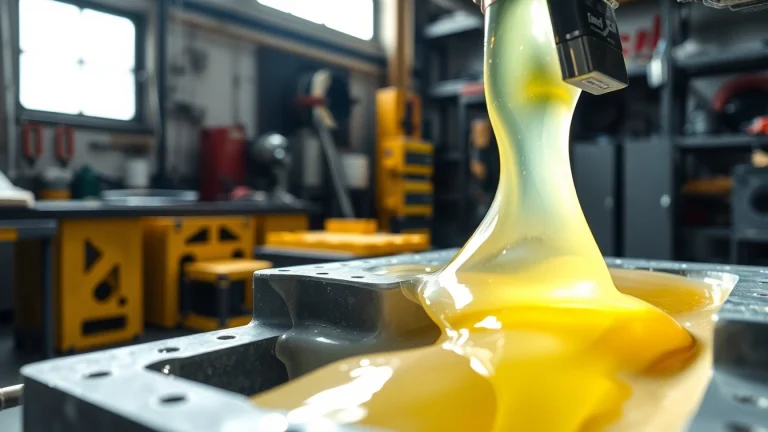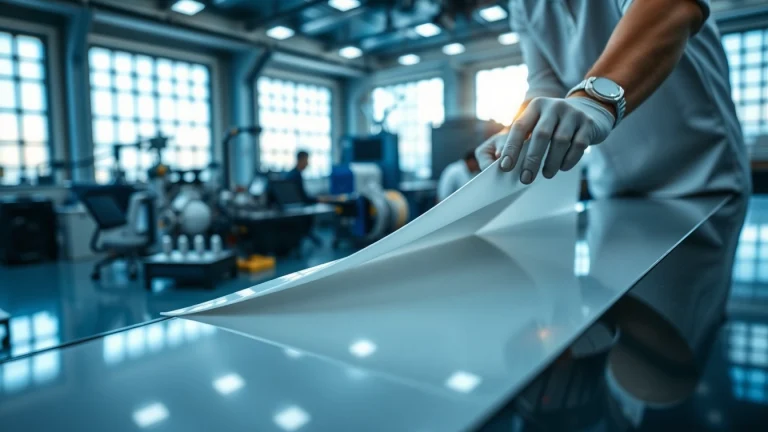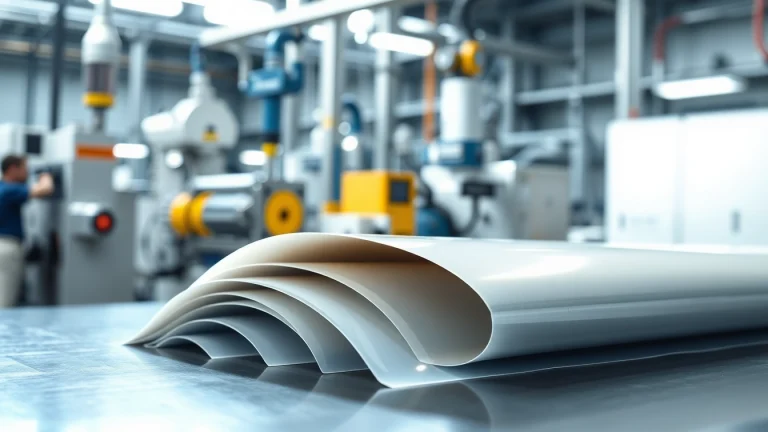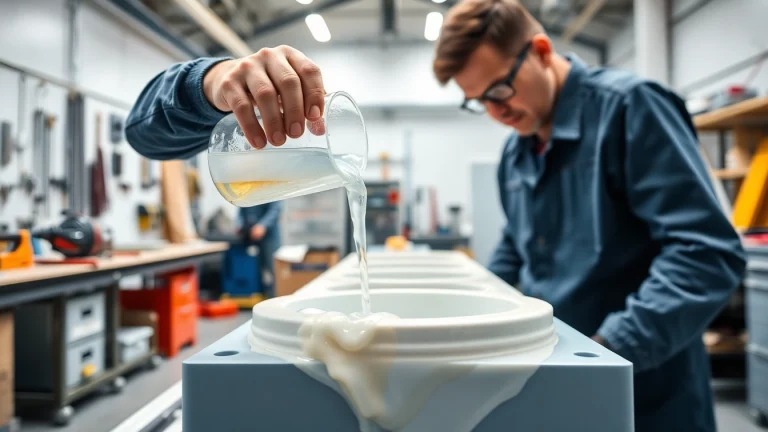
Elevate Composite Manufacturing with High-Performance Infusion Resins
Understanding Infusion Resins
In the realm of advanced composite manufacturing, infusion resins have emerged as a critical component. These versatile materials are engineered to enhance the performance and durability of composite structures by facilitating an effective manufacturing process. This article delves into the intricacies of infusion resins, their benefits, applications, and much more, equipping you with the knowledge necessary to understand and leverage these materials in your projects.
What are Infusion Resins?
Infusion resins are specially formulated liquids that are used in composite manufacturing through a process known as resin infusion. This procedure involves drawing air from a mold containing dry fiber and then introducing resin into the mold under vacuum pressure. The result is a structure that is not only lightweight but also remarkably strong and resilient. Infusion resins are characterized by their low viscosity, which allows them to flow smoothly and penetrate fiber mats, ensuring a homogeneous and dense end product.
The Benefits of Using Infusion Resins
The advantages of infusion resins are manifold, making them a favored choice among composite manufacturers. Here are some key benefits:
- Enhanced Strength and Durability: Infusion resins provide strong bonding and cohesion within composite materials, leading to high-performance structures capable of withstanding significant stress.
- Weight Efficiency: The lightweight nature of composites infused with these resins contributes to the overall efficiency of the final product, particularly in industries like automotive and aerospace where every gram counts.
- Precision Manufacturing: The vacuum infusion process allows for better control over the resin flow, leading to precise and consistent filling of complex molds.
- Reduced VOC Emissions: Many modern infusion resins are designed to emit fewer volatile organic compounds (VOCs), aligning with the growing demand for eco-friendly manufacturing practices.
- Improved Surface Finish: Infusion resins provide a smooth surface finish due to their lower viscosity, which helps minimize surface defects in the final product.
Common Applications of Infusion Resins
Infusion resins are utilized across various industries where composite materials are essential. Some common applications include:
- Aerospace: Lightweight and strong composite structures made from infusion resins are key in aircraft manufacturing, enhancing fuel efficiency and performance.
- Marine: The marine industry leverages infusion resins for boat hulls and components, which require high strength-to-weight ratios to perform effectively in harsh environments.
- Automotive: As the automotive industry moves towards lightweight materials for better fuel economy, infusion resins are increasingly employed in the production of various vehicle parts.
- Wind Energy: The manufacturing of wind turbine blades, where strength and durability are paramount, often utilizes infusion resins for optimal performance.
- Consumer Products: Infusion resins are also found in a variety of consumer products, where aesthetic appeal and durability are essential.
Choosing the Right Infusion Resins
Selecting the appropriate infusion resin for a specific application requires careful consideration of various factors. Understanding these elements can significantly impact the performance and effectiveness of the final product.
Factors to Consider
When choosing infusion resins, consider the following factors:
- Viscosity: Lower viscosity resins are preferable for complex mold geometries as they flow more easily, ensuring thorough infiltration.
- Cure Time: The resin cure time needs to align with the production schedule. Some applications may require fast curing to increase throughput.
- Mechanical Properties: Evaluate the tensile strength, impact resistance, and thermal stability based on the application’s requirements.
- Environmental Resistance: For outdoor applications, consider resins that provide excellent resistance to UV light and moisture.
- Cost Considerations: Budget constraints can dictate the choice of resin. It is essential to balance performance and cost-effectiveness.
Popular Types of Infusion Resins
Different types of infusion resins are available, each offering unique properties. Here are some of the most popular options:
- Epoxy Resins: Known for their strong adhesive properties and resistance to environmental degradation, epoxy resins are widely used in a variety of applications.
- Polyester Resins: These resins are generally less expensive and faster curing, making them suitable for less demanding applications.
- Vinyl Ester Resins: Combining the best properties of epoxy and polyester, vinyl ester resins offer excellent corrosion resistance and are favored in marine applications.
- Bio-based Resins: These sustainable options are gaining traction as they utilize renewable materials and reduce the carbon footprint of composite manufacturing.
Environmental Impact of Infusion Resins
As awareness of environmental concerns rises, the composite manufacturing industry is evolving. Many manufacturers are now prioritizing ecological sustainability by developing resins with a lower environmental impact. For instance, bio-based infusion resins reduce reliance on fossil fuels and decrease carbon emissions during the production process. Additionally, practices such as recycling and reusing composite materials are gaining momentum, further minimizing waste.
Application Techniques for Infusion Resins
The successful application of infusion resins hinges on mastering correct techniques. Below, we outline the essential steps and provide tips for optimal results.
Step-by-Step Process for Using Infusion Resins
- Preparing the Mold: Clean and dry the mold thoroughly. Apply a release agent to prevent the cured resin from sticking to the mold.
- Arranging Fibers: Lay dry fiber reinforcement in the mold, ensuring that it is positioned correctly to achieve the desired structure.
- Setting Up the Vacuum System: Attach the vacuum ports and ensure that the system is airtight to create sufficient pressure for resin infusion.
- Pumping the Resin: Introduce the infusion resin through the inlet port, allowing it to flow through the fibers by vacuum pressure.
- Monitoring the Process: Continuously monitor the infusion process to ensure complete saturation of the fibers and avoid dry spots.
- Curing: Once the resin has infused the fiber thoroughly, allow it to cure completely before demolding.
Tips for Optimal Results with Infusion Resins
To achieve the best results in your infusion processes, follow these expert tips:
- Pre-wet the Fiber: Pre-wetting the fibers can help reduce the risk of air entrapment and facilitate a more even resin flow.
- Control the Temperature: Maintain consistent temperatures during the curing process to ensure uniform curing and optimal mechanical properties.
- Use Appropriate Venting: Provide sufficient ventilation ports to help air escape while bringing in the resin, preventing voids.
- Experiment with Different Resins: Testing various infusion resins can lead to improved outcomes in terms of performance, curing time, and workability.
Common Mistakes to Avoid
Achieving a successful infusion requires avoiding common pitfalls that can lead to structural issues:
- Inadequate Preparation: Skipping mold preparation can lead to sticking and surface imperfections.
- Poor Vacuum Seal: Ensuring a tight seal in the vacuum system is crucial for effective resin infusion without air leaks.
- Ignoring Cure Times: Rushing the curing process can compromise the structural integrity of the composite.
- Overlooking Environmental Conditions: Factors like humidity and temperature can affect the curing process and resin performance, so it’s important to monitor these variables.
Performance Metrics of Infusion Resins
Understanding the performance metrics of infusion resins is vital for ensuring that the final products meet required standards. Here’s an overview of key evaluation criteria:
Testing and Quality Assurance
Performance testing is essential for verifying that infusion resins will perform as expected in real-world applications. Standard tests include:
- Tensile Strength: Measures how much pulling force a material can withstand before breaking.
- Flexural Modulus: Assesses a material’s ability to resist deformation under load.
- Impact Resistance: Evaluates how well a material can withstand sudden forces without failing.
- Thermal Stability: Tests the resin’s performance at elevated temperatures, which is critical in applications subjected to heat.
Evaluating Longevity and Durability
Longevity and durability assessments ensure that the composites made with infusion resins stand the test of time. Factors to consider include:
- Environmental Resistance: The ability to resist degradation from environmental factors, such as UV exposure and humidity.
- Fatigue Life: Determines how the material performs over repeated load cycles, which is especially critical in applications experiencing dynamic loads.
Comparative Analysis with Other Resins
When selecting infusion resins, a comparative analysis with other resin types can offer valuable insights. Considerations include:
- Performance Under Stress: Compare tensile, flexural, and impact characteristics across different resin types to select the most suitable option.
- Curing Times: Assess how resin selection impacts overall production schedules, especially in high-volume manufacturing scenarios.
- Cost-to-Performance Ratio: Evaluate how the performance of infusion resins justifies their cost compared to alternatives like polyester and vinyl ester resins.
Future Trends in Infusion Resins Technology
The market for infusion resins is continuously evolving, with innovations paving the way for improved performance and environmental sustainability. Looking ahead, several trends are shaping the future of infusion resins.
Innovations in Resin Formulation
Research and development are leading to advancements in resin formulations. Innovations may include:
- Smart Resins: Future resin materials may incorporate smart technology to monitor performance and respond to environmental conditions.
- Enhanced Adhesion Properties: New formulations may focus on improving adhesion to various substrates, thus expanding application capabilities.
Sustainability in Infusion Resins
Sustainability is becoming a primary focus within the composite industry. Trends include:
- Recyclable Resins: The development of infusion resins that can be recycled post-use is crucial for meeting environmental standards.
- Biodegradable Options: Research into bio-based infusion resins that provide performance without harming the environment is currently underway.
Market Trends and Consumer Preferences
As manufacturers seek to meet consumer demands, key trends are emerging:
- Increased Customization: The demand for tailored solutions is driving the development of specialty infusion resins that cater to specific applications.
- Emphasis on Performance: Consumers are increasingly informed about material properties, requiring manufacturers to utilize the latest technology in resin formulations to meet expectations.


